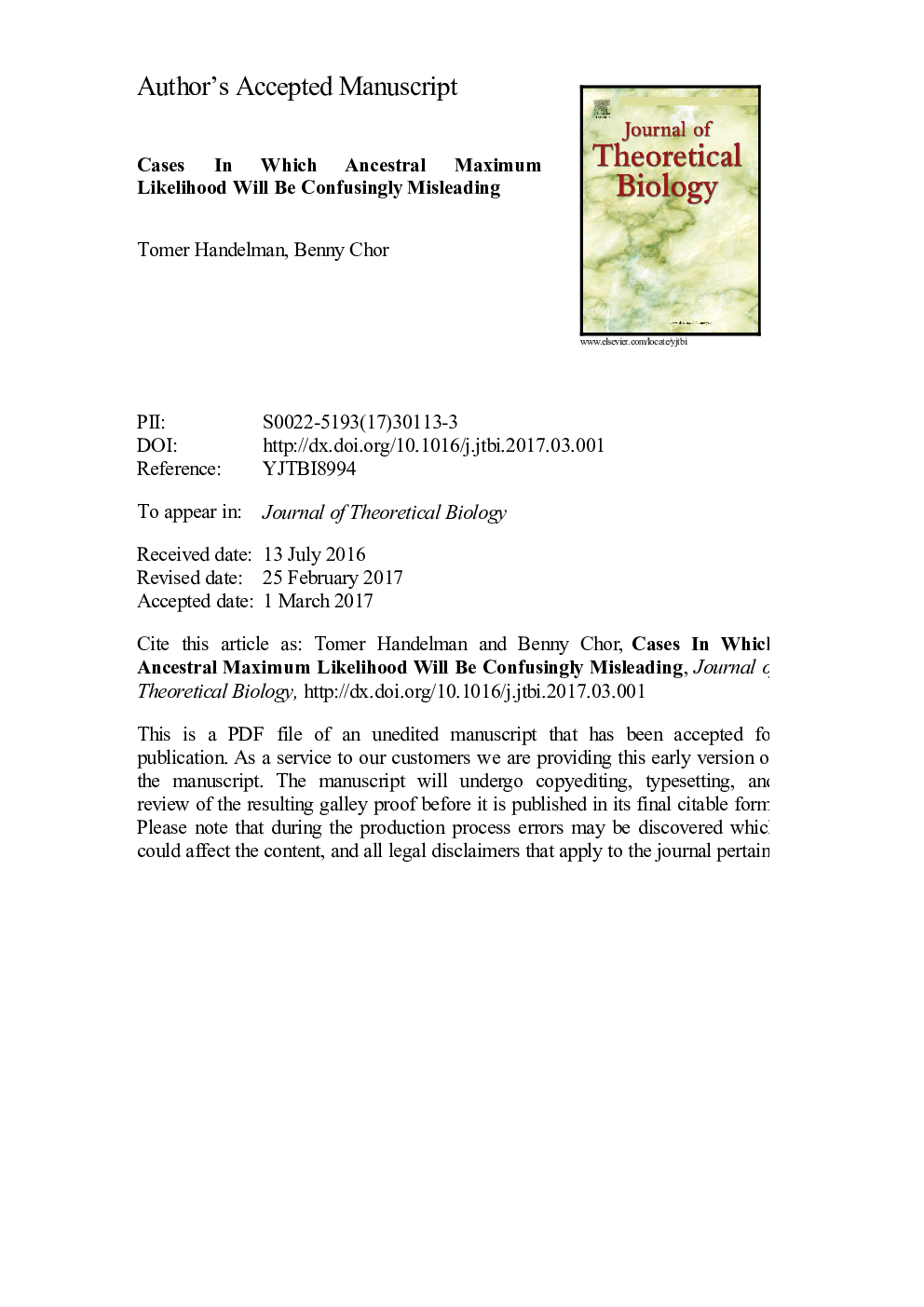| کد مقاله | کد نشریه | سال انتشار | مقاله انگلیسی | نسخه تمام متن |
|---|---|---|---|---|
| 5760067 | 1623790 | 2017 | 15 صفحه PDF | دانلود رایگان |
عنوان انگلیسی مقاله ISI
Cases in which ancestral maximum likelihood will be confusingly misleading
ترجمه فارسی عنوان
مواردی که در آن حداکثر احتمال اجداد گیج کننده گمراه کننده خواهد بود
دانلود مقاله + سفارش ترجمه
دانلود مقاله ISI انگلیسی
رایگان برای ایرانیان
کلمات کلیدی
بازسازی فیلوژنتیک، حداکثر احتمال اجداد، حداکثر پارسیمونی، هماهنگی آماری،
موضوعات مرتبط
علوم زیستی و بیوفناوری
علوم کشاورزی و بیولوژیک
علوم کشاورزی و بیولوژیک (عمومی)
چکیده انگلیسی
Ancestral maximum likelihood (AML) is a phylogenetic tree reconstruction criteria that “lies between” maximum parsimony (MP) and maximum likelihood (ML). ML has long been known to be statistically consistent. On the other hand, Felsenstein (1978) showed that MP is statistically inconsistent, and even positively misleading: There are cases where the parsimony criteria, applied to data generated according to one tree topology, will be optimized on a different tree topology. The question of weather AML is statistically consistent or not has been open for a long time. Mossel et al. (2009) have shown that AML can “shrink” short tree edges, resulting in a star tree with no internal resolution, which yields a better AML score than the original (resolved) model. This result implies that AML is statistically inconsistent, but not that it is positively misleading, because the star tree is compatible with any other topology. We show that AML is confusingly misleading: For some simple, four taxa (resolved) tree, the ancestral likelihood optimization criteria is maximized on an incorrect (resolved) tree topology, as well as on a star tree (both with specific edge lengths), while the tree with the original, correct topology, has strictly lower ancestral likelihood. Interestingly, the two short edges in the incorrect, resolved tree topology are of length zero, and are not adjacent, so this resolved tree is in fact a simple path. While for MP, the underlying phenomenon can be described as long edge attraction, it turns out that here we have long edge repulsion.
ناشر
Database: Elsevier - ScienceDirect (ساینس دایرکت)
Journal: Journal of Theoretical Biology - Volume 420, 7 May 2017, Pages 318-323
Journal: Journal of Theoretical Biology - Volume 420, 7 May 2017, Pages 318-323
نویسندگان
Tomer Handelman, Benny Chor,
